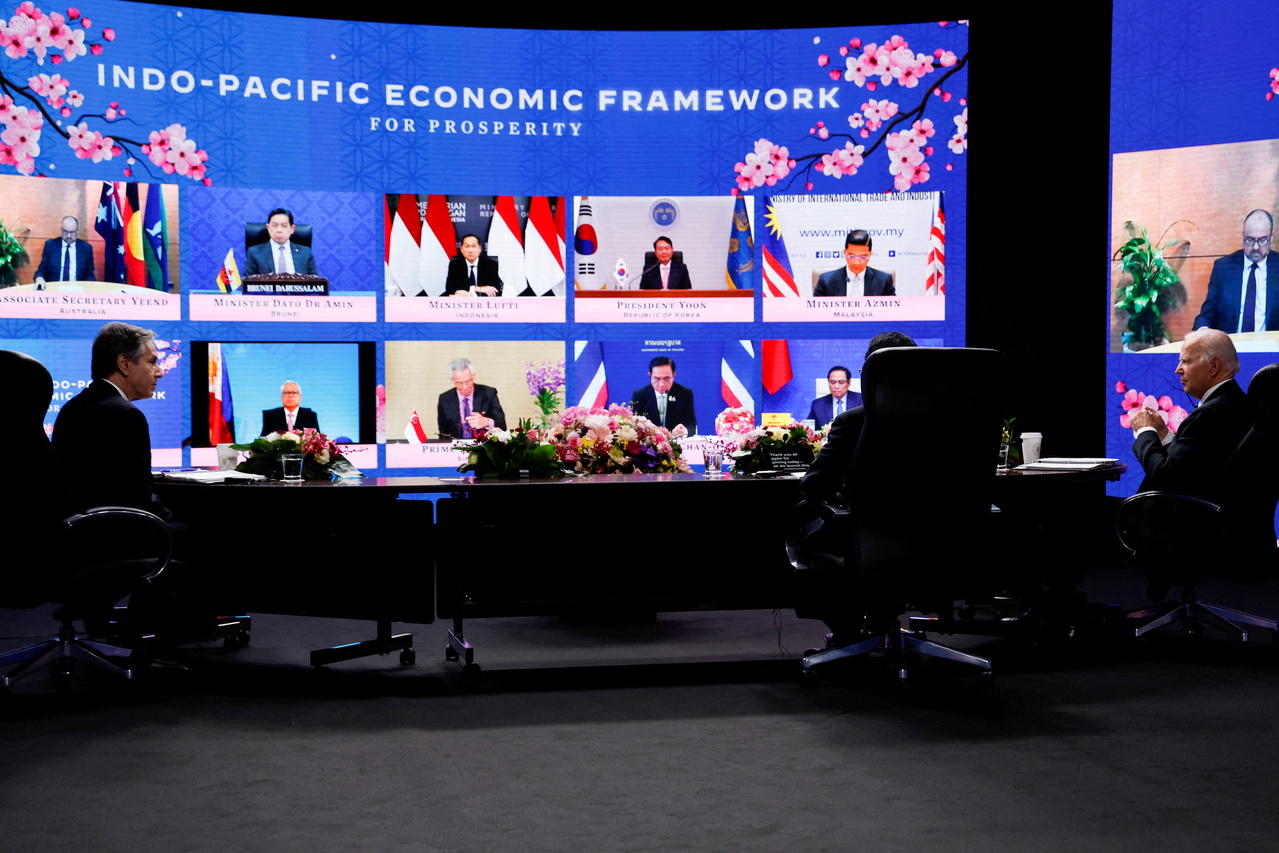New G-7 initiative has potential to be a game changer in the Indo-Pacific
With support from the US private sector, the G-7 Partnership for Global Infrastructure and Investment could fuel growth and development as well as deepen ties between the United States and countries in the region.
Sign up now: Get ST's newsletters delivered to your inbox

The United States proposed and 13 Indo-Pacific countries agreed to launch in May the Indo-Pacific Economic Framework for Prosperity.
PHOTO: REUTERS
Barbara Weisel
Follow topic:
The Covid-19 pandemic, climate change, technology shifts and geopolitical tensions have all created significant new economic challenges for Indo-Pacific countries.
Against this backdrop, the United States proposed and 13 Indo-Pacific countries agreed to launch in May the Indo-Pacific Economic Framework for Prosperity (IPEF). The initiative aims to strengthen US engagement in the region not through a traditional trade agreement - which many regional partners preferred - but through an economic agreement with four so-called modules dealing with trade; supply chains; clean energy, decarbonisation and infrastructure; and tax and anti-corruption.
With market access off the table, at least for now, partner countries have rightly asked what specific benefits the IPEF will deliver.
The US promises two major benefits.
First, IPEF will deepen economic ties between the US and IPEF partners through common regional rules, standards and principles that will foster digital transformation, supply chain resilience, energy transition and good governance.
Second, IPEF will provide an enabling environment for US investment in the region.
While potentially entailing a political lift, IPEF countries recognise that agreement on digital rules and standards, if strong and binding, would enhance cyber security; promote innovation, trusted data flows and digital inclusion; and support jobs across all sectors.
Concrete rules, common standards and intensified coordination on supply chains would strengthen economic resilience. And agreed standards and approaches on clean energy and decarbonisation would support their climate goals.
IPEF partners also know this economic transformation won't come cheap, and they expect the US to show them the money.
The US is already the largest investor across the Indo-Pacific region - and has been for some time. At nearly US$1 trillion (S$1.4 trillion), US investment far surpasses that of any other country, and it has increased in every major Indo-Pacific economy over the past decade. But as countries seek to transform their economies, their appetite for foreign investment has only increased.
Many of the largest economies in the Indo-Pacific face an acute infrastructure funding gap. For example, the United Nations estimates that South-east Asian countries alone will need to spend around US$110 billion annually on infrastructure over the next decade or so to meet their needs - needs that are not being met by public financing.
Filling this gap will require the US private sector.
The G-7 Partnership for Global Infrastructure and Investment (PGII) may help in this regard. Announced in late May at the Group of Seven leaders' summit, the initiative is aimed at mobilising US$600 billion by 2027 - US$200 billion from the US public and private sectors - towards quality, high-standard, sustainable infrastructure and focused on climate, health, digital and gender equality.
As President Joe Biden said in announcing the PGII: "This isn't aid or charity; it's an investment that will deliver returns for everyone. It'll boost all of our economies, and it's a chance for us to share our positive vision for the future and let communities around the world see themselves - and see for themselves the concrete benefits of partnering with democracies."
But translating this vision into reality will require better alignment between the interests of regional governments and potential investors, including the US private sector. To this end, the American Association of the Indo-Pacific (AAIP) - a new organisation that supports US-headquartered businesses with significant interests across the Indo-Pacific - has developed recommendations calling for supporting architecture, including:
- A new regional PGII council to mobilise, coordinate and connect US private sector capital to impactful projects that support IPEF goals and regional economic growth and transformation;
- A regional secretariat based in Singapore that would coordinate work and help identify bankable projects and advise on the strategic deployment of funds, guarantees and technical support to maximise development impact;
- A PGII advisory council that would provide governments with expertise from the business and investor community and detailed advice and proposals, including on PGII terms, structure, project prioritisation and the role the US and other IPEF governments should play to best attract investor interest; and
- A regular annual summit at which governments would evaluate progress and discuss next steps.
With the support of the US private sector, which stands ready to help, the PGII has the potential to be a game changer, especially if supporting architecture like that proposed by AAIP is adopted. Its success would fuel regional growth and development, deepen ties between the US and IPEF countries, and meaningfully boost US economic and strategic interests in the region.
- Barbara Weisel is a managing director at Rock Creek Global Advisors in Washington, and a member of the AAIP advisory board. A former American trade official, she was the country's chief negotiator of the original Trans-Pacific Partnership Agreement.

